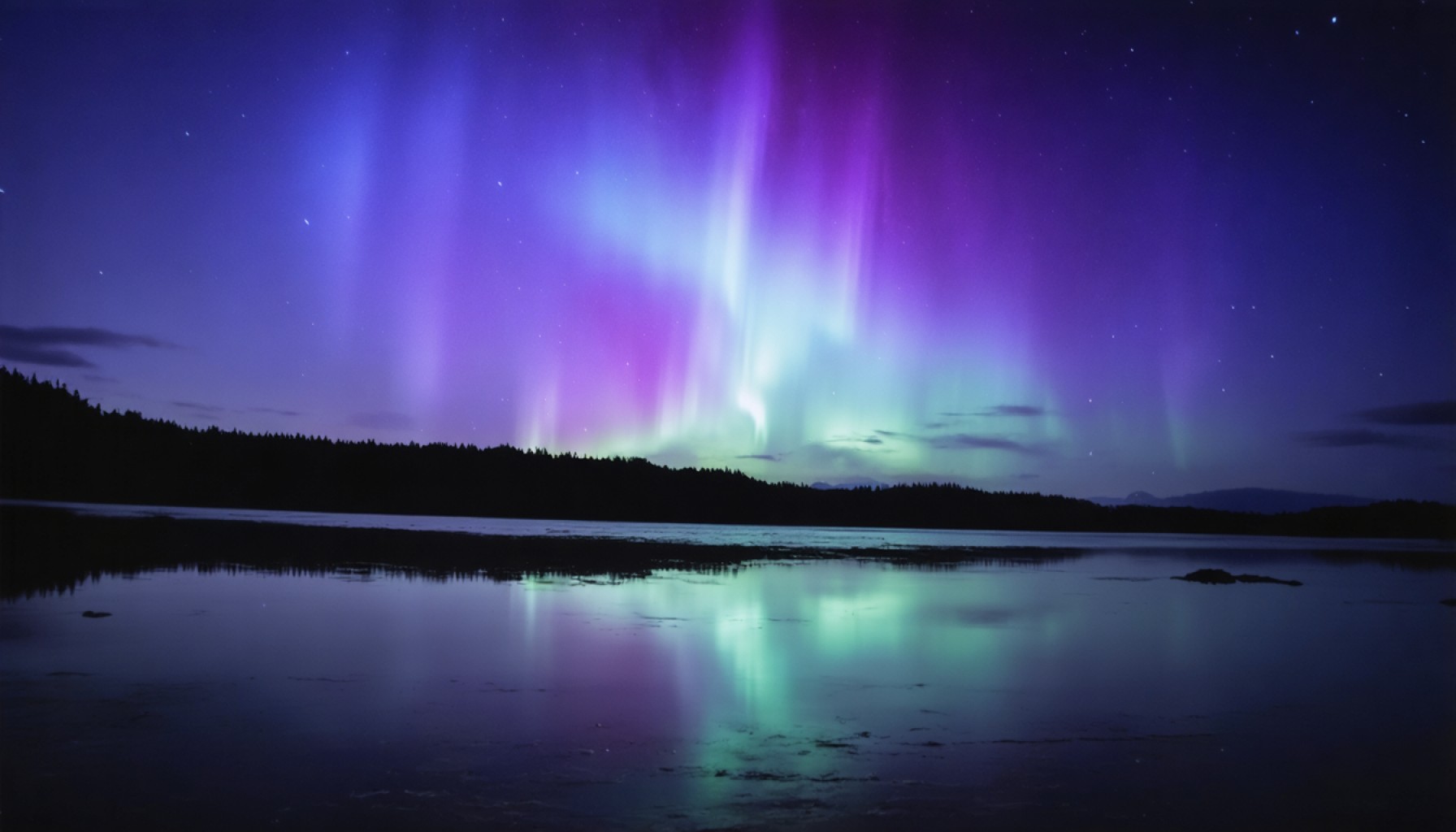- Auroras require three key elements: charged particles, a magnetic field, and an atmosphere.
- All planets in our solar system, except Mercury, experience auroras, each unique due to their specific magnetic and atmospheric conditions.
- Earth’s auroras are powered by solar eruptions directing electrons into its magnetic field, creating distinct green and red lights.
- Venus, lacking a magnetic shield, still sees auroras as solar winds induce temporary magnetism, igniting flashes against its dense atmosphere.
- On Mars, remnants of its ancient magnetic field allow sporadic auroras that reflect the planet’s geological history.
- Jupiter’s vast magnetic field transforms Io’s volcanic emissions into intense ultraviolet auroras.
- Auroras symbolize the complex interplay of magnetism and atmosphere across the solar system, celebrating the diverse spectacles of each celestial body.
Across our solar system, a symphony of vivid colors ignites the skies of planets and moons, mirroring the breathtaking auroras we marvel at on Earth. These ethereal displays require just three components: high-speed charged particles, a magnetic field to guide them, and an atmosphere for them to transform into luminous art.
Our planet isn’t the sole performer of this shimmering ballet. Every planet—save for elusive Mercury, stripped of an atmosphere—hosts these cosmic light shows. Imagine fields charged with particles from solar winds, channeled by magnetic arcs into atmospheric collisions. Picture the magnetic embrace as iron filings scattered around a bar magnet, forms unseen drawn into visual wonder.
Earth’s auroras, the ghostly greens and reds dancing in polar skies, are fueled by solar eruptions pitching electrons into our magnetic field. But the universe has its variations. On forbidding Venus, bereft of its own magnetic guard, solar winds craft an impromptu shield, guiding charged particles to swirl against the dense carbon dioxide clouds, sparking brief but brilliant flashes of light.
Remote Mars, once wrapped in a magnetic cocoon, now bears only whispering echoes of its former shield. Entrapped within crustal remnants, auroras flicker with unpredictable beauty, revealing the planet’s geological memory etched in light.
Galactic drama unfolds on Jupiter, where Io’s volcanic breath hurls sulfur into the void. Jupiter’s immense magnetic field captures this fiery exhalation, whipping it into the gaseous expanses and igniting auroras that blaze intensely in ultraviolet brilliance—a theater of energy that dwarfs Earth’s auroral dance.
These celestial phenomena, more than mere beauty, remind us of the intricate magnetism and atmospheric marvels defining each world. Auroras, shimmering curtains of light, echo through our solar system, a universal pageantry that transcends earthly bounds. With every charged burst illuminating the cosmos, they affirm the shared fabric of space unfolding in an endless cosmic choreography. Let us look up and embrace the luminous diversity that these planetary beacons bestow, whispering the stories of worlds far beyond our own.
Unlocking the Secrets of Auroras Across the Solar System
Auroras Across Our Solar System
Auroras are not just an Earthbound phenomenon. The dazzling light displays are a universal spectacle occurring on various planets and, intriguingly, offer insights into planetary environments beyond our own. This article delves deeper into these stunning visual phenomena, applying current cosmic knowledge and adhering to the E-E-A-T (Experience, Expertise, Authoritativeness, and Trustworthiness) framework to enhance our understanding of auroras across the solar system.
Key Insights into Cosmic Auroras
1. Mechanism of Auroras: Auroras are created when high-speed charged particles, often from solar winds, interact with a planet’s magnetic field and atmosphere. This interaction causes the particles to emit light, resulting in beautiful displays of color in the sky.
2. Auroras on Venus: Despite lacking an intrinsic magnetic field, Venus experiences auroras. The planet’s thick atmosphere, rich in carbon dioxide, acts in conjunction with solar winds to produce brief, colorful flashes.
3. Martian Auroras: Mars, having lost its global magnetic field billions of years ago, now has localized magnetic fields where auroras are observed. These regions reveal traces of past planetary magnetism.
4. Jovian Auroras: Jupiter hosts some of the solar system’s most spectacular auroras, powered by both solar wind particles and material from its volcanic moon, Io. These auroras are predominantly visible in the ultraviolet spectrum, and their intensity far exceeds that of Earth’s auroral displays.
Pressing Questions and Answers
– Why does Mercury not have auroras?
Mercury lacks a substantive atmosphere, one of the critical components necessary for aurora creation, thus it does not have any significant auroras.
– What are the colors of auroras across different planets?
– Earth: Typically green and red due to oxygen, though blues and purples can appear from nitrogen.
– Jupiter and Saturn: Display brilliant blues and ultraviolet lights.
– Mars: Shows greenish hues primarily due to oxygen.
– Can auroras be seen on moons?
Yes, moons like Jupiter’s Io and Europa can experience auroras due to their interaction with Jupiter’s magnetic field.
Industry Trends and Market Forecasts
The exploration of auroras on other planets, assisted by advanced telescopic technologies and space probes, continues to grow. Significant efforts are being made to develop better tools for observing and analyzing these phenomena, thus expanding our astrophysical knowledge and enhancing applications in space weather prediction.
Real-World Use Cases
Understanding auroras goes beyond aesthetic appreciation; it is crucial for potentially settling or visiting other planets. The behavior of charged particles can impact both communications and technology used in space exploration missions.
Actionable Recommendations
– Astronomy Enthusiasts: Consider investing in filters that allow the observation of ultraviolet light to appreciate auroras like those on Jupiter.
– Students and Educators: Use online databases such as NASA’s [website](https://www.nasa.gov) for real-time data on solar winds and planetary magnetic fields.
– Tech Developers: Focus on creating more portable UV-sensitive technology to enhance the study and documentation of auroras in educational settings.
By exploring and understanding the auroras of other worlds, we gain a window into their atmospheric and magnetic properties, offering a glimpse into our solar system’s dynamic and interconnected nature.
